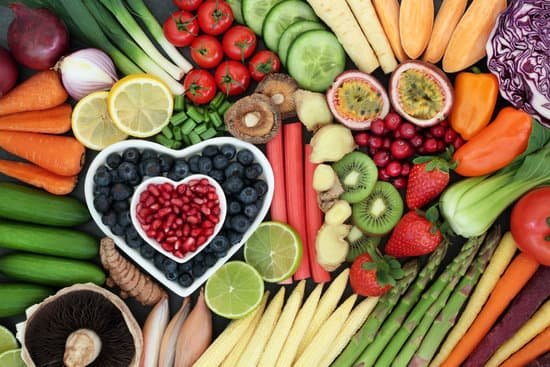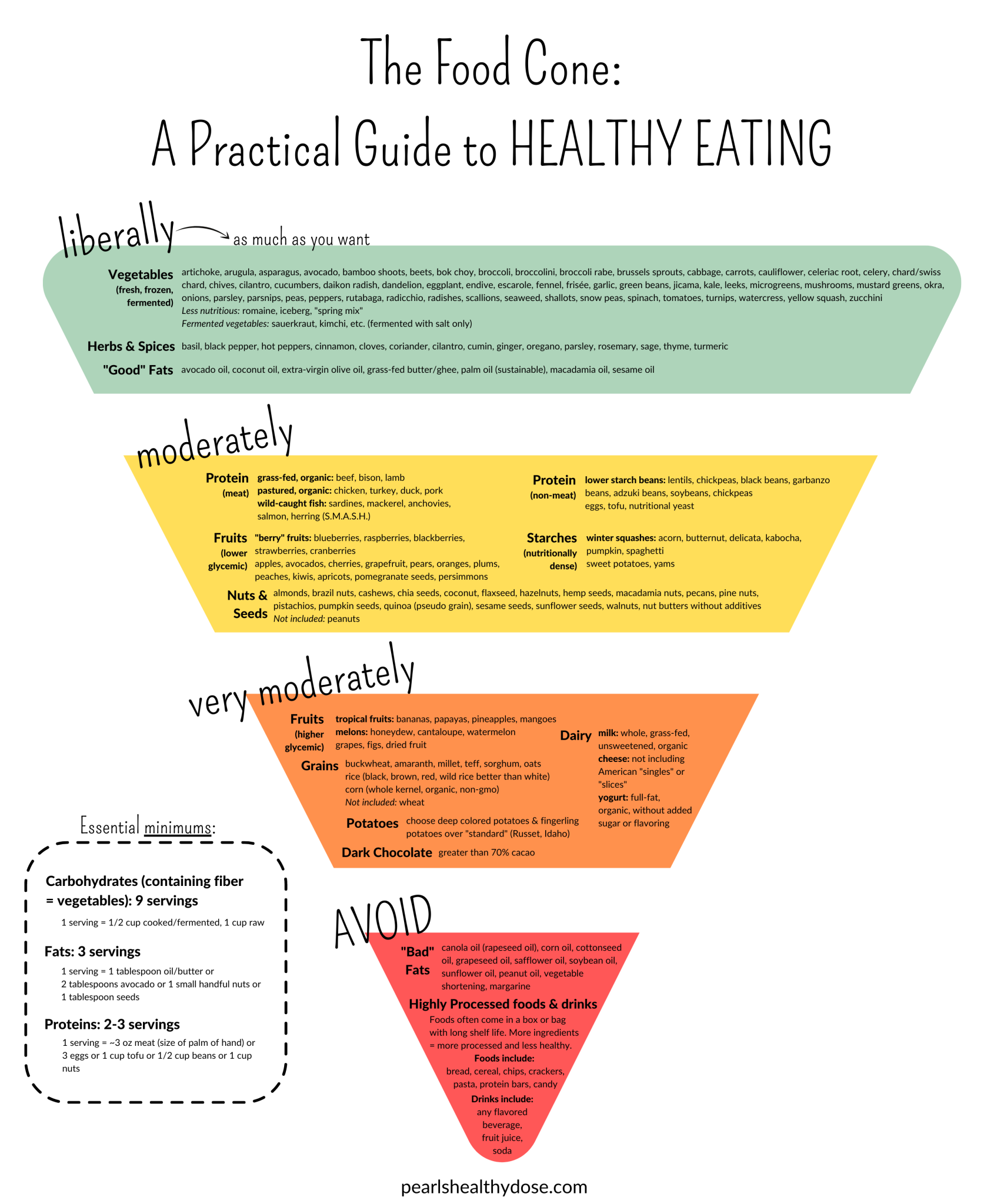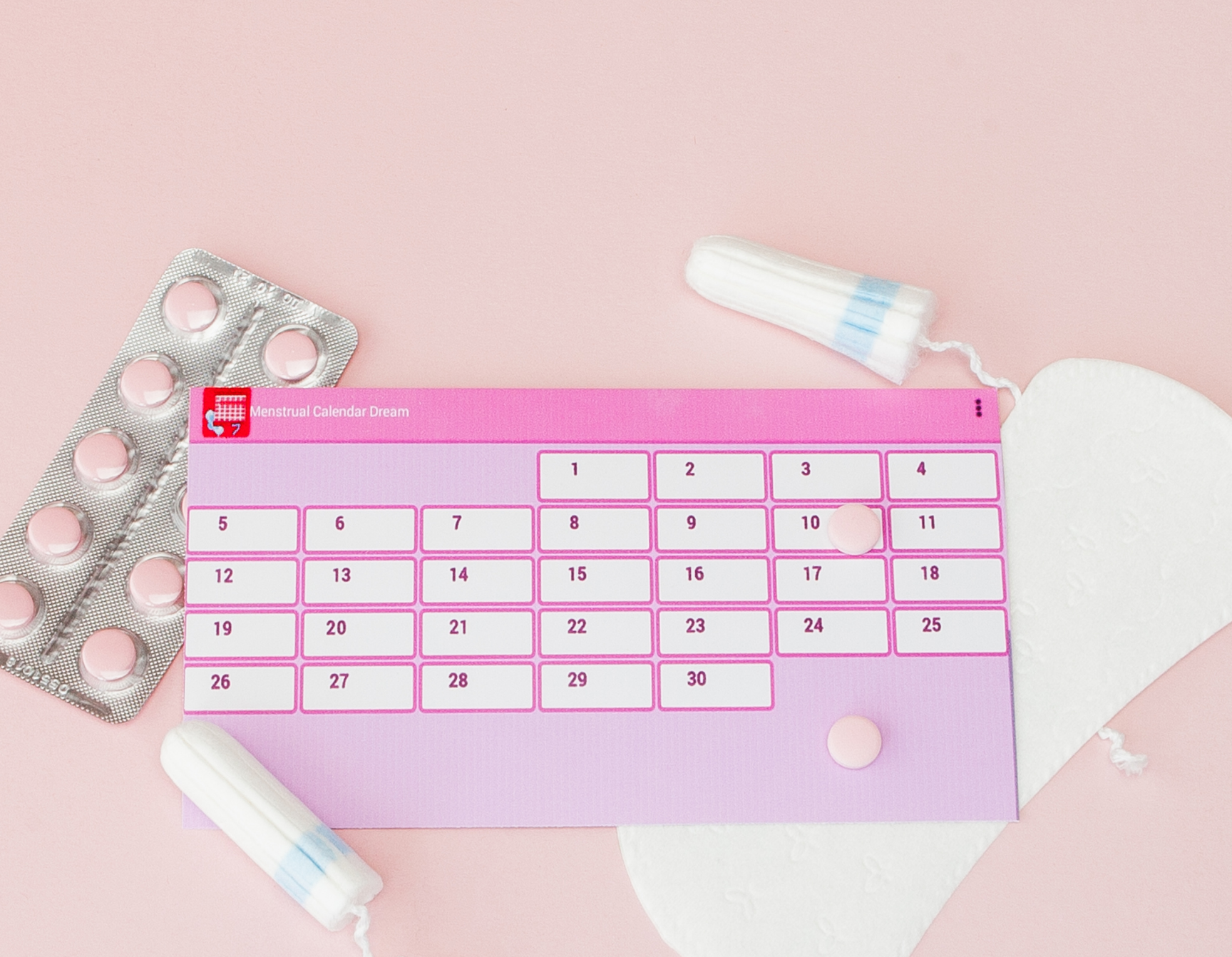How are healthy foods determined on the food cone?
This diagram aims to reduce inflammatory foods and glucose spikes. No matter where you are in the spectrum of health, you can benefit from limiting inflammation and maintaining a balanced blood sugar.
What foods are inflammatory? Everything in the red triangle – “bad” oils, sugar, processed foods. There really is no need for these foods in your diet. Our bodies do not need anything in this category to function.
What spikes your glucose? Sugar and most processed foods (these are double whammies with their inflammatory effects!), fruits (especially tropical), starchy vegetables and grains. With glucose regulation, how much you eat and what you eat with the food really matters. Try to consume high glucose foods with protein, fiber (vegetables), and fats to lessen the glucose spike. The spikes can lead to weight gain, mood issues, brain fog and increased food cravings. It’s a vicious cycle! Break this cycle by eating nutrient dense meals full of protein, fat, and fiber.
There is no one size fits all diet.
Some individuals can tolerate more starchy, sweet foods because they are more insulin sensitive, while others may easily experience large glucose spikes due to being insulin resistant. How can you estimate your insulin sensitivity without labs? Measure your waist to hip ratio: optimal level for women < 0.8 and for men <0.9.
We all have different genetics that can affect which foods are good for us. For example, individuals who carry one or two copies of the APOE4 gene may not tolerate as much saturated fat that’s present in animal fats and coconut oil.
Our individual microbiomes are vastly different and can affect how we metabolize foods.
Many individuals have food allergies, sensitivities or intolerances that may limit foods for them, even ones that are categorized as “healthy.” Examples include gluten, dairy, soy, nuts, corn, eggs, and shellfish.
Balance is key.
Too much of a good thing is a bad thing! We want diversity in our diet to obtain all the different nutrients available from a variety of foods. Eat different grains, different fruits, different vegetables..eat the rainbow! Eating the same thing every day, though they may be healthy foods, may be limiting types of nutrient intake. Additionally, eating a variety of whole foods create greater gut microbiome diversity, which corresponds to better overall health.
Focus on what you are NOT eating.
A diet high in processed foods displaces healthy, whole foods. Make sure you are eating enough protein, fat and fiber as shown in the “Essential minimums” box. When we eat enough nutrient dense foods, there is less room for “junk” foods. Additionally, focusing on getting enough real food ensures a more complete nutrient intake.
Eat foods that make you feel good.
After a meal, you should not feel bloated, sleepy, or like there is a rock sitting in your midsection. If this is the case, evaluate what you consumed. If you feel sleepiness or brain fog, the meal you ate earlier may have caused too big of a glucose spike. Bloating may be caused by sensitivities or intolerances by foods such as gluten or dairy. Pay attention to how different foods make you feel and make sure what you are eating is fueling your day, not bringing you down!




